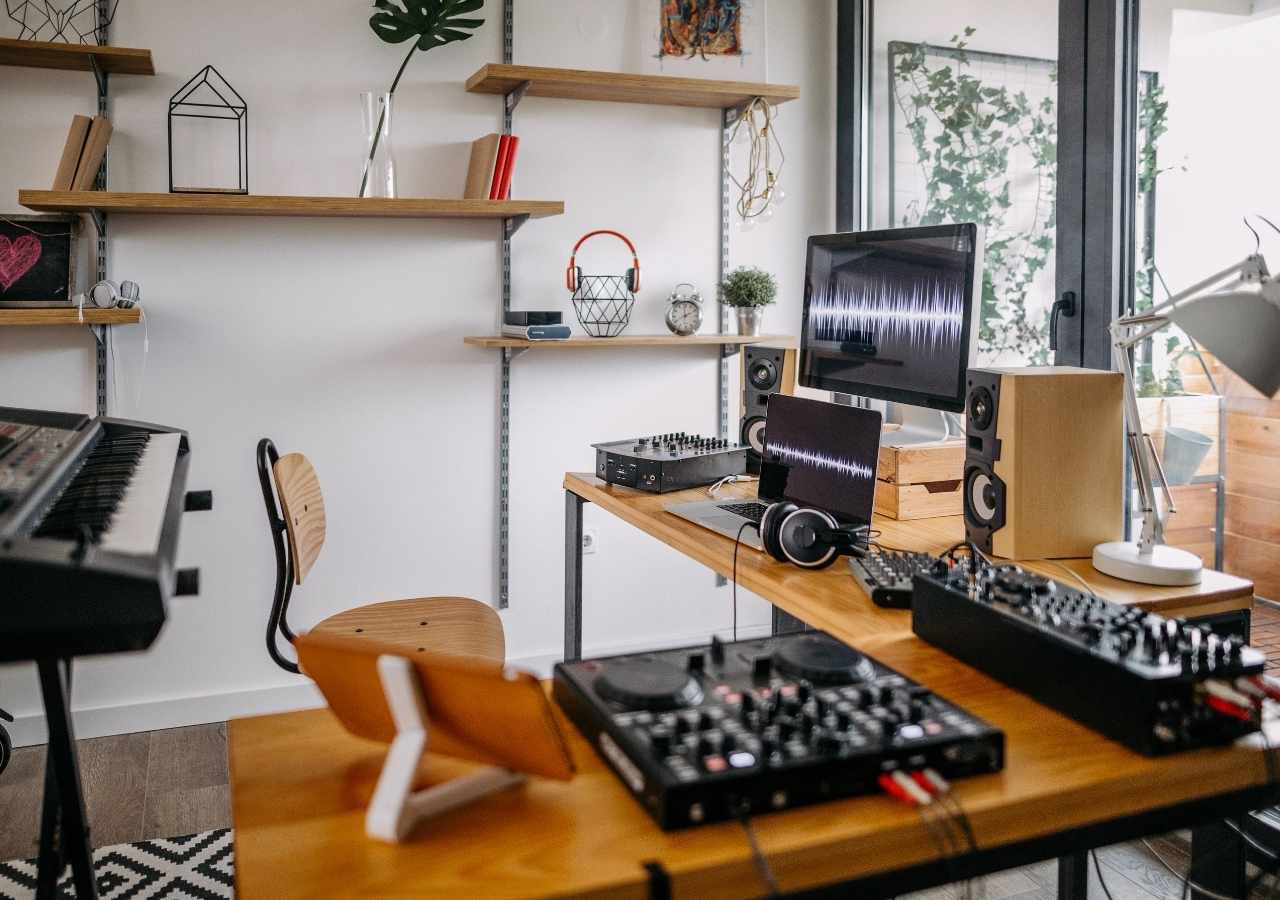10 Amateur Mistakes That Ruin Home Recordings (And How to Fix Them)
Avoid these common home recording mistakes that ruin your sound. Get professional results with proper mic placement, room treatment, and smart recording habits.

Page Table of Contents
Setting up a home studio is exciting—until you play back your first take and hear muddy vocals, distracting pops, or a constant hum in the background. Suddenly, that creative buzz turns into frustration. Whether you're podcasting, laying down guitar tracks, or trying to get a clean drum sound, small mistakes can sabotage even the best gear.
The upside? Most recording problems aren't about budget. Great recordings come from understanding the basics and applying them well, not from owning the most expensive microphone in the store. Below are ten of the most common mistakes beginners make, along with clear fixes to help you move from "bedroom demo" to "studio polish."
One of the first hurdles is gaining staging. Beginners often push levels too high, which leads to harsh digital clipping—red lights flashing on your interface or DAW meters hitting 0dB. Once clipped, those peaks are gone for good.
On the other hand, tracking too quietly means your performance gets buried under noise. Later, boosting the signal only raises the hiss and room rumble with it.
Fix it: Aim for peaks around -6 dB to -3dBTP, which leaves safe headroom but still keeps you above the noise floor. A simple rule: live in the "yellow zone" of your interface's meter—green is weak, red is broken, yellow is just right.
Your recording environment is part of your signal chain. Bare walls and floors reflect sound, adding echoes and resonances that make tracks sound hollow or washed out.
Common culprits: flutter echoes from parallel walls, bass buildup in corners, traffic or HVAC noise, and long reverberation.
Fix it: You don't need to spend thousands. Start with rugs, pillows, curtains, and bookcases to absorb reflections. A closet full of clothes doubles as a makeshift booth. Hang blankets or foam at reflection points and, if possible, put thicker material in the corners as DIY bass traps.
Even with the right mic, placement can make or break a take. Too close, and you'll hear plosives and boomy bass. Too far, and you'll capture more of your room than the instrument.
Guidelines:
Remember the proximity effect: directional mics boost bass the closer you get. Use it creatively, but don't let it overpower your sound. And when working with multiple mics, follow the 3:1 rule to reduce phase problems.
Not all microphones are versatile. Condensers capture fine detail but also every squeak in your chair. Dynamics are tougher and block out room noise, making them better for drums or amps. Ribbon mics add vintage smoothness but are delicate and less bright.
Quick matches:
Choosing correctly up front saves hours of EQ later.
When two mics pick up the same source slightly out of sync, parts of the waveform cancel each other. The result? A thin, hollow sound that no EQ can fully restore.
When it happens: stereo recordings, close + room mic setups, or reflections bouncing back into your mic.
Fix it: Flip the phase switch in your DAW, or use correlation meters. A quick trick is to sum everything to mono—if the track suddenly loses body, phase issues are lurking.
Your recording settings matter. At 16-bit, you lose valuable dynamic range. At 44.1kHz, aliasing and artifacts sneak in during heavy processing.
Fix it: Always record at 24-bit, 48kHz minimum. If you plan on a lot of pitch shifting or time stretching, bump it to 96kHz. Yes, it uses more drive space, but storage is cheaper than redoing takes.
Plosives ("P" and "B" sounds) hit the mic capsule with a burst of air that creates ugly pops. Once recorded, they're nearly impossible to remove.
Fix it: Use a pop filter 4–6 inches from the mic. No budget? Stretch pantyhose over a wire hoop—it works. Also, angle the mic slightly off-axis and keep your distance steady to avoid excessive bass boost.
The biggest beginner trap: thinking bad recordings can be fixed later with plugins. Restoration tools exist, but they're no substitute for a clean take.
Bottom line: get it right at the source. A solid take with light processing beats a messy one with endless correction
Samples are part of most modern productions, but poor-quality files instantly give away an amateur mix.
Good samples have: proper resolution, smooth loops, balanced volume, and professional processing.
Fix it: Choose libraries that fit your track's style, pitch, and tempo. Layer multiple samples for weight, and shape them with EQ so they blend naturally. Don't settle for low-grade freebies—many sites offer pro-quality samples at no cost if you know where to look.
Every mixing decision depends on what you hear. Cheap headphones or computer speakers lie to you, making your mix fall apart on other systems.
Mistakes to avoid: blasting mixes at high volume, skipping acoustic treatment in your workspace, or checking your track on only one playback system.
Fix it: Invest in flat-response studio monitors, set them in an equilateral triangle with your head, and treat first reflection points. Compare your mix with professional reference tracks and check on multiple devices (car, earbuds, Bluetooth speaker). Use headphones for detail work, but don't rely on them alone.
These ten mistakes account for most of the "home-recording sound" people want to escape from. Luckily, each one has a straightforward fix. By controlling your space, choosing the right mic, and getting clean recordings at the source, you'll hear immediate improvements.
Remember: professional results come from technique, not just gear. Apply these tips step by step, and soon your tracks will hold up next to commercial releases.
Start with gain staging—peaks around -6dB are safe. Use the right mic for the source, place it correctly, and reduce room reflections with basic treatment.
Choose a quiet room, dampen hard surfaces, place your mic properly (about 6–8 inches for vocals), record at 24-bit/48kHz, and always monitor your levels.
Put a pop filter 4–6 inches in front of the mic, keep your mouth slightly off-axis, and watch plosives carefully.
Don't record without checking levels, don't ignore room treatment, and don't rely on plugins to rescue a poor performance or bad mic choice.

Find kid-friendly Halloween songs, activities, and playlist ideas to create a fun and spooky atmosphere for your students.…

Explore how AI is reshaping music creation and production. Learn the benefits, risks, and practical ways musicians can use AI without losing authenticity.…

Learn how to blend historical narratives with personal heartbreak to write unique, powerful songs. Discover niche songwriting ideas and practical tips. …